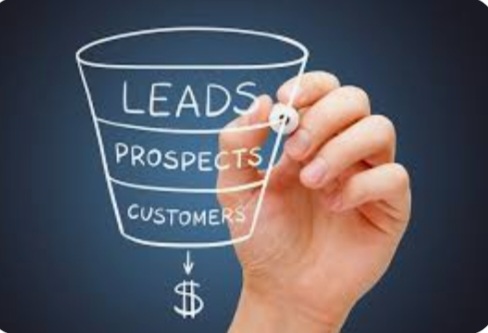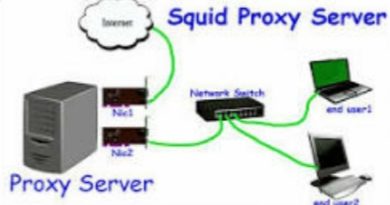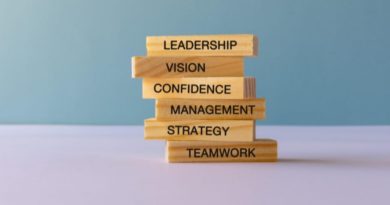Sales Business Development Practices Step-By-Step Tech Sales Plan
In Business and Sales development and acquisition,I have presented products and services to prospects and demonstrated features.
- Identifying potential customers
- Create strong messaging and cold calling strategies
- Personal and professional development
- Ask the right questions
- Working with sales engagement platforms
- Following up Importance
- Closing Sales
There are three variables I have to manage when prospecting:
The marketplace, the message, and the messenger.
When I’m considering an organizations sales and business development function, I have to choose a company that can help control those variables – A Standardized Approach Best Business Practices
How I am a Good Business Sales Developer
My SDR best practices include everything from working on powerful sales outreach processes and sequence creation to constant personal and professional skill development. In this position, I spend most of my time calling, messaging, and communicating with potential clients. The one and only result I seek is to get the prospect to convert. Each of the above-mentioned processes needs to be fine-tuned and consistent.
From pipeline establishment via list building gathering intelligence and acquisition to outbound and inbound lead generation to business development working with the top technology companies entrusted me to help plan, develop, and manage their sales and marketing effort.nTo be successful in technology sales and marketing campaigns, I continue to team execute and maintain and understanding of the technology and its business applications. Continues to work with dome of the top OEMS, VADs, and channel partners in the nation to help them market and sell a wide array of technology solutions from security and virtualization to convergence and cloud computing.
Here are some of the technologies I have learned and been trained on:
Oracle, IBM Services, HP, Dell, I4DM, Ingram Micro, Tech Data, VMware, EMC2, Arrow, Cisco, Sirius, Technologent, Clearpath, Sentia. NetApp. Cumberland Group, Lenovo, Carousel Industries, easing consumers pressures with solutions meeting and supporting customer requirements in all areas of Information Technology.
Hardware
Software SaaS
Cloud Computing
Back-Up
Hyper Converged Infrastructure
Data Storage
Storage
Virtualization
Power
Server
Phone System
It’s not enough just to be a sales development representative, it’s important to understand what strategies and tactics to implement in order to succeed.
As a Sales Development rep. here is required information for my lead report for any technology campaign outlined by need. This gained intel is important to success of the client.
Asking right questions for each IT product:
REQUIRED BACKGROUND INFO *By Need
General Storage need:
- How old is your current storage solution? What brand?
- How much data are you storing, total? (TB amount)
- At what percent capacity is your solution currently at?
- Are you looking at on-premise or cloud-based solutions or both?
- How much data capacity are you looking for in a new solution?
Back-up need:
- Why are you looking to add to/change your back-up solution?
- What kind of solution are you looking into? (Cloud, on-premise)
- What brand backup solution are you using now? How old is this?
- How much data are you backing up? (TB amount)
- How much data capacity are you looking for in a new solution?
Cloud Computing need:
-
- What are you looking to move to the cloud? (back-up, all storage, servers, applications)
- For cloud back up or storage: what type of data are planning to move to the cloud?
- What are you looking to move to the cloud? (back-up, all storage, servers, applications)
- For cloud/hosted servers: How many hosted servers are you wanting on the cloud?
- For applications: What types of applications are you considering moving to the cloud?
- Are you considering public, private or a hybrid version of those?
- How much data are you looking to move to the cloud? (TB amount)
- Are you currently utilizing cloud services?
- If yes
- Who do you use for cloud (IBM, Azure, AWS, Google, Oracle, Alibaba)?
- Why aren’t you looking to stay with that provider?
- If yes
Converged Infrastructure need:
- How many servers are you currently utilizing? Brand? Age?
- What storage solution do you currently utilize? Brand? Age?
- How much data are you currently backing up? (TB amount)
- Do you currently have any converged/hyper-converged infrastructure?
Power need:
- Are you using IBM Power i or IBM AIX servers?
- If IBM i
- Which of these IBM Power i servers are you currently actively running and how many of each are being used actively: (note if any are for archived data only)
- Power5 (# of boxes)
- Power6 (# of boxes)
- Power7 (# of boxes)
- Power8 (# of boxes)
- What version (s) of IBM i OS are you currently running the machine (s) on:
- IBM i 7.1
- IBM i 7.2
- IBM i 7.3
- Which of these IBM Power i servers are you currently actively running and how many of each are being used actively: (note if any are for archived data only)
- If AIX
- Which of these IBM AIX Power servers are you currently actively running and how many of each are being used actively: (note if any are for archived data only)
- Power5 (# of boxes)
- Power6 (# of boxes)
- Power7 (# of boxes)
- Power8 (# of boxes)
- What version (s) of AIX are you currently running the machine (s) on:
- AIX v 5.3
- AIX v 6.1
- AIX v 7.1
- AIX v 7.2
- Which of these IBM AIX Power servers are you currently actively running and how many of each are being used actively: (note if any are for archived data only)
- If IBM i
- What specific software applications are running on the servers you want to replace, per server? (Examples: JD Edwards [EnterpriseOne] [Oracle], Infor [A+, M3, LN, VISUAL], VAI [S2K Enterprise])
- Have you already received quotes for a new POWER server? If so, did the vendor who currently supports the IBM Power server for you provide a quote?
- Do you have an IBM partner that you already work regularly with for your IBM Power server?
- Are you planning to move the Power server to the cloud? If yes- Please explain.
Phone System need:
- Do you have an on-premise or IP based phone system?
- How old is your current phone system?
- What brand system do you have?
- How many users do you have?
Unified Communications need:
- Do you have an or-premise on IP based phone system?
- How old is this system? Brand?
- Do you have a standalone phone system, or it is a unified communications platform?
- What solution do you use for WebEx, messaging, video conference, desktop sharing?
- Is it an integrated solution or are they all separate solutions?
- How many users do you have?
- How many (if any) would you estimate are remote?
Server need:
- How many servers are you looking to purchase?
- How old are your current servers? How old are the ones you are looking to replace?
- How many servers do you have now?
- What brand servers do you currently use?
Virtualization need:
- Server Virtualization
- How many virtual servers are you wanting to add?
- Are you open to any brand or do you have a preference of something like VMware or HyperV?
- Have you done any server virtualization before? (if yes) What solution did you use and how much of your environment is virtual?
- Storage Virtualization
- Is there something in particular that is making you want to virtualize your storage environment?
- What features are you looking for in a virtual storage solution?
Security need:
- What area of security are you looking to evaluate/improve? (email, intrusion, internal access, firewalls)
- What led you to want to investigate new security solutions?
- How many users do you have?
- Do you have any compliance regulations that you have to adhere to?
- What security solutions do you have in place? (it must be noted that this question was asked, if the prospect is not comfortable answering this is ok but it must be noted)
Networking Hardware need:
- What brand routers and switches are you using?
- How old are your current routers and switches?
- How many routers and switches do you currently have?
- Are you a single location or multi-locational type campus?
- How many access points do you have? Do you need more?
IoT need:
- Are you involved with your group’s use of IoT?
- Have you had any discussions around digital transformation or “connecting” your current product offering?
- Do you currently use any business intelligence or analytics tools to analyze the data gathered from your IoT devices?
- (If yes) Great! What solution do you use?
- (If no) Have you ever explored analytics solutions in the past?
- Are you beginning to research the latest IoT asset management solutions for your organization?
- What cloud-based AI or cognitive services do you require or suspect you may need?
- Do you have a data-to-response time requirement?
- How do you currently handle field device management?
Managed Services need:
- Are you currently working with a managed services company? Who?
- Are you under contract?
- If yes- How much time is left on the contract?
- Are you looking for Tier 1 (help desk), Tier 2 (Product specific experts), Tier 3 (advanced technical issues), or full IT support?
- About how many support tickets per month do you see on average?
- How many users do you have?
Software (note that this is very general as each software message is unique):
- What solution are you using to help you accommodate this pain/need currently?
- If a competitive software-
- How long have you had this solution?
- How many licenses/users do you have for this product?
- What is the biggest issue with this solution? (users don’t like, price, not comprehensive, etc).
- If an internal work around or manual solution- outline what they are currently doing now to try and accommodate this process/pain.
- How many employees do you have that work on this process currently? [gives us an idea on license count that would be needed]
- What is the most painful part of this process?
- If you were to outline the improvements you would like to see a software make to this process, what would they be?
- If a competitive software-
Desktop/Laptop Refresh need:
- Is there a particular brand you are evaluating or are you open to evaluating brands based on the best fit for your environment?
- How many are you looking to refresh?
- Are there any features that are a must have for your new desktops/laptops?
- What price range per computer are you aiming for? Or do you have budget for the entire project?
- What do you currently have in place? Are there any features you felt were missing or wish you had with those?
1. IT Basics
- IT = Information Technology
- Hardware
- Physical Components
- Software
- A program or set of instructions telling a computer what to do
- Operating System
- Connects the hardware to the software
- Server
- In Information Technology a server is a computer program that provides services to other computer programs and their users.
- Servers provide essential services access a network either to private users inside a large organization or to public users via the internet.
What is End-to-End IT?
- IT Infrastructure = End-to-End IT
- End0to-End IT describes the services that clients offers to their prospects
- End-to-End means that client can handle most IT projects
What Titles I Contact!
Infrastructure Titles
- CIO
- CTO
- VP of IT
- Network Administrator
- Network Analyst
- IT Director – NO
- IT Manager – NO
Managed Services Titles
- President
- CEO
- CFO
- COO
- Controller – NO
- Office Manager – NO
2. IT Infrastructure
Information technology infrastructure, or IT infrastructure, refers to the combined components needed for the operation and management of enterprise IT services and IT environments.
Why IT infrastructure is important
Technology powers nearly every aspect of today’s businesses, from an individual employee’s work to operations to goods and services. When properly networked, technology can be optimized to improve communication, create efficiencies and increase productivity.
If an IT infrastructure is flexible, reliable and secure, it can help an enterprise meet its goals and provide a competitive edge in the market. Alternatively, if an IT infrastructure isn’t properly implemented, businesses can face connectivity, productivity and security issues—like system disruptions and breaches. Overall, having a properly implemented infrastructure can be a factor in whether a business is profitable or not.
With an IT infrastructure, a company can:
- Provide a positive customer experience by providing uninterrupted access to its website and online store.
- Develop and launch solutions to market with speed.
- Collect data in real time to make quick decisions.
- Improve employee productivity.
How do the components of IT infrastructure work?
The components of IT infrastructure are made up of interdependent elements, and the two core groups of components are hardware and software. Hardware uses software—like an operating system—to work. And likewise, an operating system manages system resources and hardware. Operating systems also make connections between software applications and physical resources using networking components.
Hardware
Hardware components can include:
- Desktop computers
- Servers
- Data centers
- Hubs
- Routers
- Switches
- Facilities
Software
Software components can include:
- Content management systems (CMS)
- Customer relationship management (CRM)
- Enterprise resource planning (ERP)
- Operating systems
- Web servers
Facilities
Facilities or physical plants provide space for networking hardware, servers and data centers. It also includes the network cabling in office buildings to connect components of an IT infrastructure together.
Network
Networks are comprised of switches, routers, hubs and servers. Switches connect network devices on local area networks (LAN) like routers, servers and other switches. Routers allow devices on different LANs to communicate and move packets between networks. Hubs connect multiple networking devices to act as a single component.
Server
A core hardware component needed for an enterprise IT infrastructure is a server. Servers are essentially computers that allow multiple users to access and share resources.
Server room/data center
Organizations house multiple servers in rooms called server rooms or data centers. Data centers are the core of most networks.
The two primary types of IT infrastructure are traditional and cloud infrastructure.
Traditional infrastructure
A traditional IT infrastructure is made up of the usual hardware and software components: facilities, data centers, servers, networking hardware desktop computers and enterprise application software solutions. Typically, this infrastructure setup requires more power, physical space and money than other infrastructure types. A traditional infrastructure is typically installed on-premises for company-only, or private, use.
Cloud infrastructure
A cloud computing IT infrastructure is similar to traditional infrastructure. However, end users can access the infrastructure via the internet, with the ability to use computing resources without installing on-premises through virtualization. Virtualization connects physical servers maintained by a service provider at any or many geographical locations. Then, it divides and abstracts resources, like storage, to make them accessible to users almost anywhere an internet connection can be made. Because cloud infrastructure is often public, it’s usually referred to as a public cloud.
IT infrastructure setups vary by business needs and goals, but some goals are universal for every enterprise. The optimal infrastructure will provide a business high-performance storage, a low-latency network, security, an optimized wide area network (WAN), virtualization and zero downtime.
- High-performance storage systems store and back up data and include a data recovery system in case of disasters.
- Low-latency networks use enterprise-level infrastructure components to reduce the delay of data flow.
- Secure infrastructures include systems that control information access and data availability. It can also safeguard a business against breaches and cyberattacks wherever the data resides, maintaining the customers’ trust.
- WANs manage the network by prioritizing traffic and giving certain applications more or less bandwidth as needed.
- Virtualization provides faster server provisioning, increases uptime, improves disaster recovery and saves energy.
- Zero downtime aims to reduce disruptions to business operations and eliminates system downtime to keep costs down and profits up.
A. Consolidation
- The act of reducing your server environment
- Eliminate server spraw (multiple servers being under used)
- Advantages
- Reduce space consumption
- Reduce power consumption
- Increases efficiency
- Reduces COSTS
IT Infrastructure
B. Virtualization
- Software application that divides one physical server into multiple isolated virtual environments
- Advantages
- Optimize IT environment
- Reduce complexity and improve systems management
- Two Main players
- VMware with about 75% of the market
- Hyper-V made by Microsoft, with about 20% of the market
IT Infrastructure
Consolidation & Virtualization Questions
- How many servers are you currently running on?
- At what capacity are they being used?
- How fast is your data growing each year?
- Have you done any virtualization with those?
- If they virtualize, how much of the environment have you virtualized so far? (EX: 50% or a few servers?)
- Did you end up going with VMware or Hyper-V?
- Did you do this yourself or did you have another company help you out with the implementation?
- So are you looking to continue virtualizing in the next year or so?
- Would you be willing yo evaluate us for this project?
- If you have not virtualized have you looked into virtualization before?
- Is that something you would be interested in evaluating solutions for in the next year?
3. Desktop
Virtualization
- The practice of hosting a desktop operting system with a virtual machine running on a centralized server.
- In other word, this is the process of eliminating the need for a physical computer tower and thus turns your server into sn entire environment of computers
- Each person would have a screen and a mouse/keyboard that would connect into a small device, similar to a router.
- Usrs will login and the server will give them a generic desktop with all the programs they need to perform their jub functions.
4. Cloud Computing
- Cloud computing is a general term where computing resources are provided over the internet.
Forms of Cloud Computing
-
Infrastructure-as-a-Service (IaaS)
- Provides virtual server instances with unique IP addresses and blocks of storage on demand
- Amazon Web Services
- Provides virtual server instances with unique IP addresses and blocks of storage on demand
-
Platform-as-a-Service (PaaS)
- A set of software and product development tools hosted on the providers infrastructure
- GoogleApps
- A set of software and product development tools hosted on the providers infrastructure
-
Software-as-a-Service (SaaS)
- The vendor supplies the hardware infrastructure, the software product and interacts with the user throug a front-end portal.
- Microsoft Office Live, SalesForce.com
- The vendor supplies the hardware infrastructure, the software product and interacts with the user throug a front-end portal.
Calling on Cloud Computing
- How much storage do you have now?
- How much would you like in the future
- How much data do you have? Do you expect this to increase?
- Do you have the funds to purchase hardware to accomodate for your growing data needs? (if not, Cloud)
5. IT Infrastructure BackUp Systems
- Bacing up refers to making copies of data
- copies may be used to restore the originals after a data lose event.
- The process of storing off site is called “off site data protection”
- Electronic storage device is called a “vault”
- Types
- Tape System
- Disk System
- NAS System
- SAN System
- SAN Volume Controller
6. IT Infrastructure
Business Community Planning
- A set of procedures designed, tested and agreed upon to prevent and prepare for any threat or diaster.
- Typically a BCP includes a disaster recovery plan
- The process of regaining access to the data, hardware and software necessary to resume critical business operations after a disaster.
IT Infrastructure
Business Community Planning Questions
- How do you handle internal IT threats?
- How do you handle disaster Recovery?
- Are they using back up tapes? Evaluating
- How often do you perform penetration and vulnerability tests?
- Are you satisfied with your current disaster recovery time?
- Do you protect your servers with clusters?
- If no, how do you protect your servers?
- How often do you test your cluster failover procedure?
You can reach me directly at my email address anthony@anthonycrilly.com or (585)484 – 1456. Looking forward to connecting!
Best,
Anthony Crilly
Please Visit for more information: Links:





